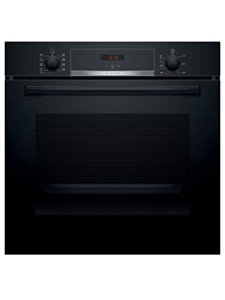The Comprehensive Guide to Built-In Cookers and Hobs
Built-in cookers and hobs have ended up being progressively popular in modern kitchen areas, supplying both functionality and visual appeal. These integrated appliances, created to fit effortlessly into kitchen cabinetry, make the most of space while boosting the cooking experience. This post will explore the various kinds of built-in cookers and hobs, their advantages, maintenance tips, and often asked concerns.
Comprehending Built-In Cookers and Hobs
Built-in cookers usually consist of ovens, while hobs describe the cooking surface area that can incorporate different heating elements such as burner, electric coils, or induction zones. When combined, these two appliances produce an efficient and streamlined cooking setup.
Types of Built-In Cookers and Hobs
When selecting a built-in cooker and hob, it's important to comprehend the various types offered. Here's an in-depth table comparing the main types:
| Type | Description | Pros | Cons |
|---|---|---|---|
| Gas Hob | Utilizes gas as a fuel source. | Quick heat modification, culinary control. | Needs gas line installation. |
| Electric Hob | Uses electric coils or strong plate heating. | Generally less costly, simple to tidy. | Slower to heat and cool down. |
| Induction Hob | Uses electro-magnetic energy for cooking. | Fast heating, energy-efficient, safe. | Costly, requires compatible cookware. |
| Built-In Oven | Can be electric, gas, or mix. | Flexible cooking options, different sizes. | Fixed place, prospective setup intricacy. |
Advantages of Built-In Cookers and Hobs
- Space-Saving Design: Built-in systems save area by integrating effortlessly into the kitchen layout, leaving more space for storage and countertops.
- Aesthetic Appeal: They offer a sleek and modern-day look, elevating the design of any kitchen.
- Modification: With many designs and configurations, property owners can pick appliances that best match their cooking habits and kitchen dimensions.
- Enhanced Functionality: Built-in cookers often include advanced features such as self-cleaning alternatives, several cooking modes, and programmable timers.
- Safety Features: Modern hobs integrate functions like automated shut-off and child locks, boosting safety in the kitchen.
Upkeep Tips for Built-In Cookers and Hobs
To guarantee the longevity and optimum performance of built-in cookers and hobs, correct upkeep is necessary. Below are very important upkeep ideas:
- Regular Cleaning: Wipe spills and discolorations right away to avoid them from hardening or becoming harder to clean.
- Usage Appropriate Cleaning Supplies: Avoid abrasive materials that can scratch surfaces. Usage cleaner particularly created for the type of device you have.
- Inspect Gas and Electrical Connections: Regular examinations can prevent leakages and ensure ideal performance.
- Calibrate Temperature Settings: If you observe inconsistencies in cooking temperatures, consider recalibrating the oven.
- Set Up Professional Servicing: Annual check-ups can help identify and correct small issues before they escalate.
Picking the Right Built-In Cooker and Hob
When selecting a built-in cooker and hob, a number of elements should be considered:
1. Cooking Preferences:
- If you delight in fast temperature level adjustments, a gas hob may be perfect.
- For energy effectiveness and consistent cooking, induction hobs are preferred.
2. Kitchen Size:
- Consider the space available for setup. Measure cabinets and other appliances to ensure the picked system fits easily.
3. Design and style:
- Opt for styles that match your kitchen's decoration. Built-in units come in different finishes, such as stainless-steel, black, or custom cabinetry.
4. Spending plan:
- Establish a budget that consider purchase expenses, installation fees, and long-term business expenses.
5. Brand Reputation:
- Research trusted brands understood for dependability and client service. Checking out reviews and looking for suggestions can also be valuable.
Regularly Asked Questions (FAQs)
Q1: Are built-in cookers and hobs more expensive than standard systems?A1: Generally, built-in cookers and hobs can be more costly upfront due to installation and design. However, Ovens And Hobs may use long-lasting cost savings through energy effectiveness.
Q2: Can I install a built-in cooker or hob myself?A2: While some might be installed by homeowners, it is frequently recommended to hire a professional, specifically for gas or complex electrical connections, to guarantee safety and compliance with local codes.
Q3: What is the average lifespan of built-in cookers and hobs?A3: With appropriate care, built-in cookers and hobs can last anywhere from 10 to 15 years. Regular upkeep can extend their life.
Q4: Is it possible to combine various types of hobs with the exact same oven?A4: Yes, numerous kitchens feature a combination of hobs (e.g., gas and induction) together with a built-in oven, enabling flexible cooking options.
Q5: How do I know if my hob is energy-efficient?A5: Look for energy performance ratings and consider induction hobs, which normally offer superior energy performance compared to gas or standard electric hobs.
Built-in cookers and hobs use a blend of contemporary design and advanced cooking innovation, improving any kitchen's functionality and design. By comprehending the various types readily available, their benefits, and upkeep requirements, homeowners can make educated choices when purchasing these essential kitchen appliances. With correct choice and care, built-in cookers and hobs can provide years of pleasurable cooking and a seamless kitchen experience.

